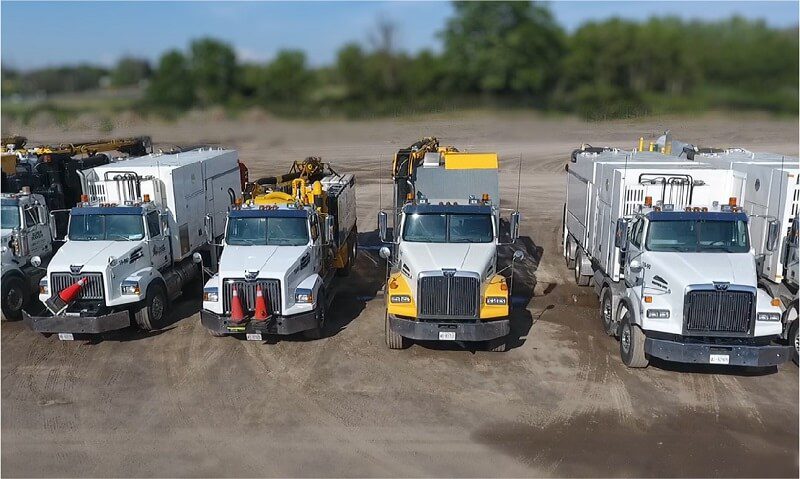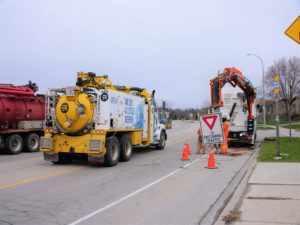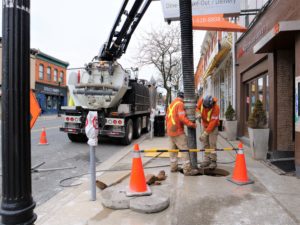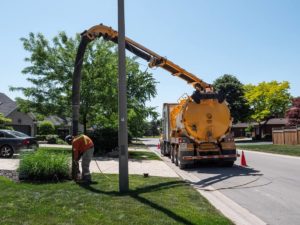How to calculate productivity and efficiency.
Vacuum excavation has long been known as the safest method of non-destructive digging when excavating around underground infrastructure, and although it’s very important to hold safety at the highest of standards – you should also be able to determine the operating costs of using this equipment ahead of time.
Calculating your volume of excavated material is fairly straightforward, however, there are a lot of factors to consider when choosing your vacuum excavation equipment that will have an impact on your bottom line.
Let’s use 12 cubic yards as the goal of your excavation, it’s a standard excavation size for most posthole and daylighting jobs and there’s one significant factor right off the bat – a standard vac truck holds approximately 7 cubic yards, so just like that, you know you’ll need to dump.
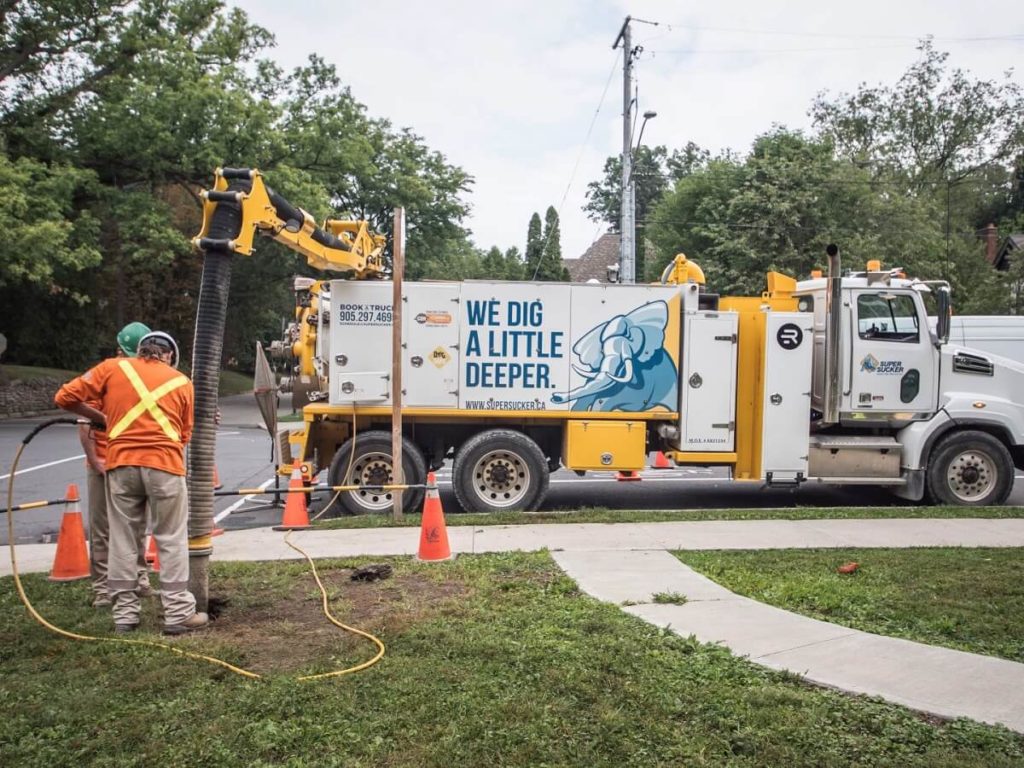

How you manage material on your excavation projects is where your wallet will be affected the most.
A standard hydrovac will reach storage capacity every few hours of solid digging, and although our advanced dry suction excavators will cut that time in half, they will also reach their holding tank capacity (just faster). No matter the dig rate of the vacuum excavation equipment you choose, everyone’s going to fill up and be required to dump, so here’s a list of details to consider when you know your excavation is more than one standard load on a vac truck:
- Where is your nearest disposal facility?
- If your vacuum excavation project is in an urban center you’ll most likely be looking at disposal facilities being at least an hour away (not including traffic). That will likely equate to an extra 2.5 to 4 hours of downtime when your vac truck is full.
- Are you familiar with current disposal rates and regulations?
- With new “Excess Soils” legislation in place in Ontario, the financial impact on constructors has increased quite significantly. Some disposal facilities are no longer accepting hydrovac slurry, and those that do are charging a premium which has a significant impact on operating costs.
- Are you bidding the work properly and then reviewing actual expenses?
- Truck weights, disposal distances, dump costs, crew requirements… the list goes on. That’s why it’s important to know (or work with someone who knows) the vac world, so that you can remove a lot of the cost variables during the bid process. Then, when the project is complete, go back and compare what your actual vacuum excavation overhead was to improve your estimates.
Making sure you get the right tool for the job.
On an annual basis Super Sucker will complete multiple fleet evaluations to ensure that there are a variety of vacuum excavation solutions available to our clients to deliver the most cost-effective productivity. But more importantly we have project teams available to work with you to evaluate and assess potential cost saving opportunities. We’ve been proudly serving Ontario municipality, utility, and construction projects for over 20 years, so you can count on us to dig a little deeper for you.
For more on the extensiveness and diversity of our fleet be sure to check out our Quick Guide On How To Choose A Vac Truck!
If you have any further questions, contact us at sales@supersucker.ca or call our Book-A-Truck hotline.
- Dual Truck Tandem
- Municipal Daylighting
- Potholing


